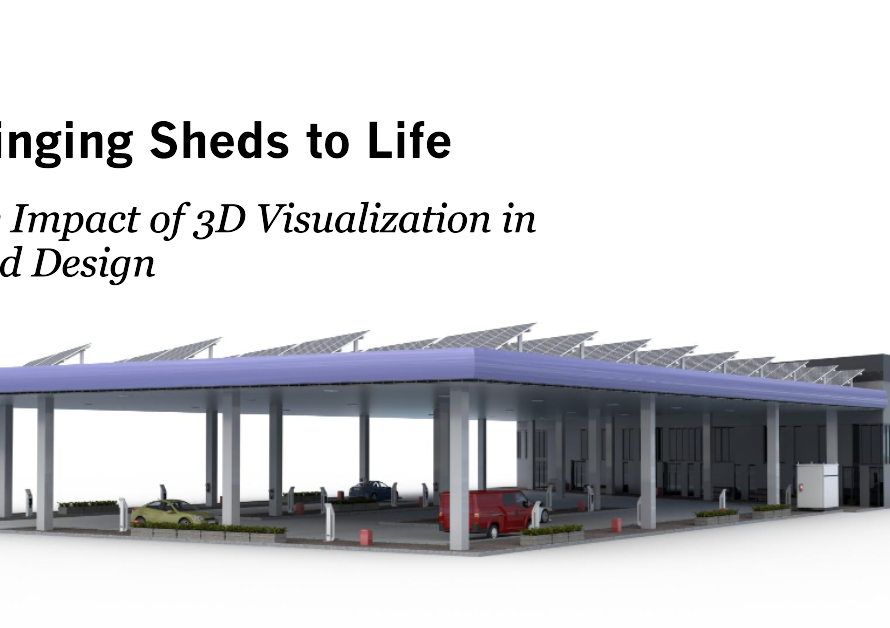
Table of Contents
Defining Deconstructivism in architecture
Deconstructivism in architecture, as a movement in architecture, challenges conventional norms and embraces the concept of chaos. It is characterized by the fragmentation, distortion, and dislocation of architectural elements, resulting in visually complex and dynamic structures. This avant-garde style originated in the 1980s as a reaction to modernism’s emphasis on order and harmony.
What sets deconstructivist architecture apart is its rejection of fixed principles and its embrace of ambiguity. It seeks to question traditional notions of form, space, and function by breaking down building components into smaller elements that can be rearranged or distorted. The outcome is a design that appears fragmented or incomplete.
One prime example of deconstructivist architecture is Frank Gehry’s Guggenheim Museum Bilbao. Its undulating titanium-clad exterior captures attention with its organic forms that defy regular geometry. Through this bold expression of deconstructionism, Gehry challenges our perceptions about structure while inviting us to explore unconventional spatial experiences within the museum’s interior.
In conclusion, deconstructivism offers architects unprecedented freedom to break free from established design conventions and push the boundaries of creativity. By dismantling traditional architectural forms and exploring new possibilities for space and structure, this abstract yet powerful style contributes to a dynamic visual landscape that provokes discussion about the nature of buildings themselves.
Origins: Influences and key figures
In its essence, deconstructivism is a movement that challenges the traditional notions of order, symmetry, and coherence in architecture. It emerged in the late 1980s as a response to Postmodernism’s reliance on historical references and the search for unified meanings in design. The origins of deconstructivism can be traced back to several influential figures who began questioning the boundaries of architecture.
One such figure is Peter Eisenman, an American architect known for his radical ideas and theoretical approach to design. His work often incorporates fragmented forms and non-linear geometries, challenging conventional architectural principles. Eisenman’s famous House II project showcased his interest in deconstruction with its play on volumes and compositional ambiguity.
Another key figure in the development of deconstructivist ideas is Bernard Tschumi. As an architect and theorist, Tschumi explored notions of space through his concept of event architecture. He emphasized disjunctions, contradictions, and overlapping spaces to create multifaceted experiences for users. Tschumi’s Parc de la Villette in Paris became an iconic example of deconstruction with its unconventional arrangement of structures breaking away from formality.
These key figures paved the way for further exploration into conceptual architecture and left a lasting impact on subsequent generations of architects who continue to push the boundaries of traditional design concepts today.
Characteristics: Breaking conventions, fragmentation, asymmetry
Deconstructivism in architecture is characterized by its bold breaking of conventions. It challenges the traditional notions of form, function, and structure, pushing the boundaries of what is deemed acceptable or conventional. In deconstructivist buildings, elements that are typically hidden or concealed are exposed and celebrated – such as beams, columns, or even mechanical systems. This intentional exposure creates a sense of rawness and honesty in the design that evokes a feeling of authenticity for the observer.
Fragmentation is another key characteristic of deconstructivism. Instead of emphasizing unity and continuity in architectural compositions, deconstructivist designs embrace fragmentation as a means to highlight different aspects or layers within the building itself. Individual components appear to be disjointed and disconnected from one another, creating an overall sense of dynamism and tension. This deliberate fragmentation not only challenges our preconceived notions about how buildings should look but also encourages us to reevaluate our understanding of space.
Asymmetry plays a crucial role in deconstructivist architecture as well. Instead of striving for balance or harmony between elements on both sides of an axis, asymmetry disrupts this traditional notion entirely. Deconstructivists purposefully manipulate and distort forms to create irregularity, imbalance, and surprise within their designs – resulting in visually stimulating and thought-provoking architecture that defies expectations. By subverting symmetry in favor of asymmetry, deconstructive architects seek to challenge established norms while forging new paths for architectural expression.
Examples: Iconic deconstructivist buildings around the world
The Guggenheim Museum in Bilbao, Spain stands as a shining example of deconstructivist architecture. Designed by Frank Gehry, the building’s organic shape and fragmented exterior create a mesmerizing visual effect that challenges traditional notions of symmetry and balance. The museum’s iconic titanium panels reflect and shimmer in the light, giving the structure an otherworldly presence. Inside, unexpected spatial configurations and interconnecting ramps guide visitors through a dynamic exhibition space that blurs boundaries between art and architecture.
Another notable deconstructivist building is the Walt Disney Concert Hall in Los Angeles, California. Designed by Frank Gehry as well, this landmark boasts a curvaceous stainless steel exterior that reflects its surroundings in ever-changing ways. The building’s undulating forms and complex geometries seem to defy gravity, creating a sense of movement frozen in time. Simultaneously grand yet intimate, the concert hall’s interior features fluid spaces with soaring ceilings and intricate details that enhance the acoustics for live performances.
These examples highlight the expressive power of deconstructivist architecture to challenge traditional design principles while creating visually stunning structures that engage and enchant viewers from all angles.
Critiques and controversies surrounding deconstructivism
The movement of deconstructivism in architecture has not been without its fair share of critiques and controversies. One major critique is that deconstructivist buildings often prioritize form over function, resulting in structures that may be visually striking but impractical to use. Some argue that the focus on unconventional shapes and fragmented forms can overshadow the fundamental purpose of architecture, which is to provide functional spaces for human beings.
Another controversy surrounding deconstructivism lies in its perceived elitism and exclusivity. Critics argue that the movement is often embraced by a select group of architects and scholars who champion abstract concepts and complex theories, making it inaccessible to the general public. This criticism raises questions about the social responsibility of architecture and whether architectural movements like deconstructivism should prioritize inclusivity and practicality over artistic expression.
Overall, while deconstructivism has undeniably pushed boundaries within the field of architecture, it remains a subject of fierce debate among professionals, academics, and enthusiasts alike. The ongoing critiques and controversies serve as a reminder that even groundbreaking architectural movements are not immune to scrutiny, requiring a delicate balance between avant-garde design experimentation and meeting the needs of society at large.
Impact and legacy of deconstructivism in architecture
Deconstructivism in architecture has had a profound impact on the field, leaving behind a lasting legacy that continues to influence designers even today. One of the key impacts of deconstructivism is its rejection of traditional architectural norms and conventions. By dismantling and reconstructing these elements in unconventional ways, deconstructivist architects have challenged the notion of structure and explored new possibilities for spatial creativity. This approach has opened up new realms of imagination for architects, encouraging them to push boundaries and think outside the box.
In addition to its impact on architectural design itself, deconstructivism has also sparked important conversations about form and function. The movement’s emphasis on fragmentation and distortion has forced theorists and critics alike to reevaluate their understanding of how buildings should be designed and experienced. Deconstructivist architecture demands active engagement from viewers as they navigate through spaces that challenge their perception of orderliness and stability. This interaction between architecture and individuals creates an atmosphere where exploration is encouraged, allowing people to see built environments in a whole new light.
The legacy of deconstructivism can be seen in many contemporary architectural marvels around the world. Buildings such as Frank Gehry’s Guggenheim Museum Bilbao or Zaha Hadid’s Heydar Aliyev Center stand as testaments to the enduring influence of this movement. Despite criticism that it prioritizes aesthetics over practicality, deconstructivism remains an essential force in shaping architectural discourse, inspiring architects to break free from traditional constraints and embrace bold experimentation. As we continue to witness its impact on
Conclusion: The enduring influence of deconstructivism
Deconstructivism, as an architectural style, has undeniably left a lasting imprint on the world of design. Its enduring influence can be seen in contemporary buildings and structures across the globe. The movement’s emphasis on fragmentation and abstract forms continues to inspire architects to push the boundaries and challenge traditional norms.
One reason for deconstructivism’s ongoing impact is its ability to evoke emotions and provoke thought through its unconventional aesthetics. The disjointed shapes, asymmetric compositions, and manipulated materials create a sense of tension that captures the attention of both designers and observers. This powerful emotional response ensures that deconstructivism remains relevant in an ever-changing world, where conformity often reigns supreme.
Furthermore, deconstructivism’s influence extends beyond architecture, seeping into other creative fields such as fashion and graphic design. The movement’s philosophy of breaking down established modes of thinking resonates with artists seeking to disrupt established norms in their respective industries. By embracing the principles of deconstructivist design, these artists are able to challenge conventions and offer fresh perspectives that captivate their audiences.
In conclusion, the endurance of deconstructivism lies not only in its striking visual impact but also in its ability to generate conversations about form, function, and meaning within our built environment. By challenging preconceived notions of what constitutes good design, this architectural style continues to push boundaries while inspiring new generations of creatives worldwide. Its enduring influence proves that even decades after its inception, deconstructivism remains a force capable of shaping our understanding of space and challenging


